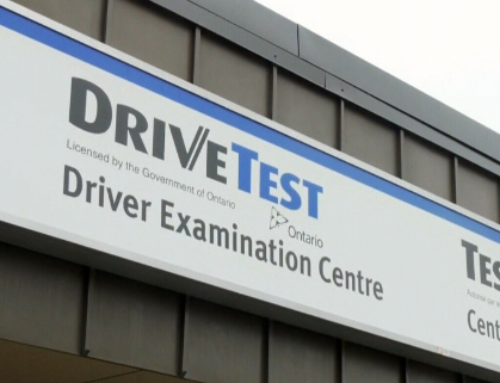Welcome to Canada Auto Approval’s comprehensive car buying guide for 2024 in Ontario. Whether you’re a first-time buyer or looking to upgrade your current vehicle, this guide will provide you with all the essential information to make an informed decision. We understand that purchasing a car is a significant investment, and our goal is to help you navigate the process smoothly and confidently.
Step 1: Determine Your Budget
Before you start browsing cars, it’s crucial to establish a clear budget. This will help you narrow down your options and ensure you don’t overspend. Here’s how you can effectively set your budget:
- Assess Your Finances: Review your income, savings, and monthly expenses to determine how much you can comfortably afford to spend on a car.
- Consider Financing Options: If you plan to finance your purchase, calculate your potential monthly payments and ensure they fit within your budget. Use online loan calculators to get an estimate.
- Factor in Additional Costs: Remember to include costs such as insurance, maintenance, fuel, and registration fees in your budget. These ongoing expenses can add up and impact your overall affordability.
Step 2: Research Your Options
Once you have a budget, start researching the types of cars that fit within it. Consider your needs, preferences, and the features that are most important to you. Here’s what you should do:
- Identify Your Needs: Think about how you’ll use the car. Do you need a fuel-efficient commuter, a spacious family vehicle, or a rugged SUV for outdoor adventures?
- Read Reviews and Ratings: Websites like Consumer Reports, Edmunds, and J.D. Power provide detailed reviews and ratings for various makes and models. These resources can help you understand the pros and cons of each vehicle.
- Compare Prices: Use online tools to compare prices of similar cars across different dealerships. This will give you an idea of the fair market value and help you identify potential deals.
Step 3: Check Your Credit Score
Your credit score plays a significant role in the car buying process, especially if you’re financing your purchase. A higher credit score can qualify you for better loan terms and lower interest rates. Here’s how to check and improve your credit score:
- Obtain Your Credit Report: You can get a free copy of your credit report from major credit bureaus like Equifax and TransUnion. Review it for any errors or inaccuracies that could affect your score.
- Improve Your Credit Score: Pay off outstanding debts, make timely payments, and avoid opening new credit accounts before applying for a car loan. These actions can boost your score and improve your financing options.
Step 4: Get Pre-Approved for a Loan
Getting pre-approved for a car loan can streamline the buying process and give you a clear idea of how much you can afford. Here’s why it’s beneficial and how to do it:
- Benefits of Pre-Approval: Pre-approval shows sellers that you’re a serious buyer with financing in place. It also helps you stay within your budget and avoid the temptation to overspend.
- How to Get Pre-Approved: Contact multiple lenders, including banks, credit unions, and online lenders, to compare loan offers. Submit the necessary documentation, such as proof of income and identification, to get pre-approved.
Step 5: Visit Dealerships and Test Drive
With your budget set and financing in place, it’s time to visit dealerships and test drive the cars you’re interested in. Here’s how to make the most of your visits:
- Schedule Appointments: Call ahead to schedule test drives and ensure the cars you’re interested in are available.
- Test Drive Multiple Cars: Don’t limit yourself to one test drive. Compare how different models feel and perform on the road. Pay attention to comfort, handling, visibility, and any unusual noises.
- Ask Questions: Inquire about the car’s history, maintenance records, and any warranties or certifications. A reputable dealer should provide you with all the necessary information.
Step 6: Negotiate the Price
Negotiating the price of your car is a crucial step in the buying process. Here’s how to approach it:
- Research Market Value: Use online tools to determine the fair market value of the car. This information will give you leverage during negotiations.
- Start Low: Begin with a lower offer than your maximum budget. This gives you room to negotiate and reach a mutually agreeable price.
- Be Prepared to Walk Away: If the dealer is unwilling to meet your price, don’t be afraid to walk away. There are plenty of cars on the market, and you don’t want to overpay.
Step 7: Review the Contract and Financing Terms
Before signing any paperwork, carefully review the contract and financing terms. Here’s what to look for:
- Check for Errors: Ensure all the details, such as the car’s make and model, purchase price, and financing terms, are accurate and match what you agreed upon.
- Understand the Terms: Make sure you fully understand the loan terms, including the interest rate, repayment period, and any fees or penalties. Don’t hesitate to ask for clarification if needed.
- Read the Fine Print: Pay close attention to any additional warranties, service contracts, or add-ons. Ensure you understand what you’re signing up for and whether it’s necessary.
Step 8: Complete the Purchase
Once you’re satisfied with the contract and financing terms, it’s time to complete the purchase. Here’s what to expect:
- Sign the Paperwork: Sign the sales contract, loan agreement, and any other necessary documents. Keep copies of everything for your records.
- Make a Down Payment: If you’re making a down payment, ensure it’s reflected in the paperwork. Get a receipt for your payment.
- Get Insurance: Before driving off the lot, make sure you have insurance coverage for your new car. Contact your insurance provider to add the car to your policy.
Step 9: Register and Insure Your Car
In Ontario, you’ll need to register your car and obtain insurance before you can legally drive it. Here’s how to do it:
- Register Your Car: Visit a ServiceOntario centre with the necessary documents, including the bill of sale, safety standards certificate, and your driver’s license. Pay the registration fee and get your license plates.
- Obtain Insurance: Provide your insurance company with the car’s details and your driver’s information. Choose a policy that meets Ontario’s minimum coverage requirements and any additional coverage you need.
Step 10: Maintain Your Vehicle
Regular maintenance is crucial to keep your car running smoothly and protect your investment. Here are some maintenance tips:
- Follow the Manufacturer’s Schedule: Adhere to the recommended maintenance schedule in your car’s owner’s manual. This includes oil changes, tire rotations, brake inspections, and more.
- Keep Records: Maintain detailed records of all maintenance and repairs. This can help with warranty claims and improve your car’s resale value.
- Address Issues Promptly: If you notice any problems with your car, such as unusual noises or warning lights, address them promptly to prevent further damage.
Buying a car in 2024 can be a smooth and enjoyable experience with the right preparation and knowledge. At Canada Auto Approval, we’re committed to helping you navigate the car buying process and secure the best deal possible!
Remember to determine your budget, research your options, check your credit score, get pre-approved for a loan, visit dealerships, negotiate the price, review the contract, complete the purchase, register and insure your car, and maintain it properly. With these steps, you’ll be well-equipped to find and finance your next vehicle with confidence. Happy car shopping!

















